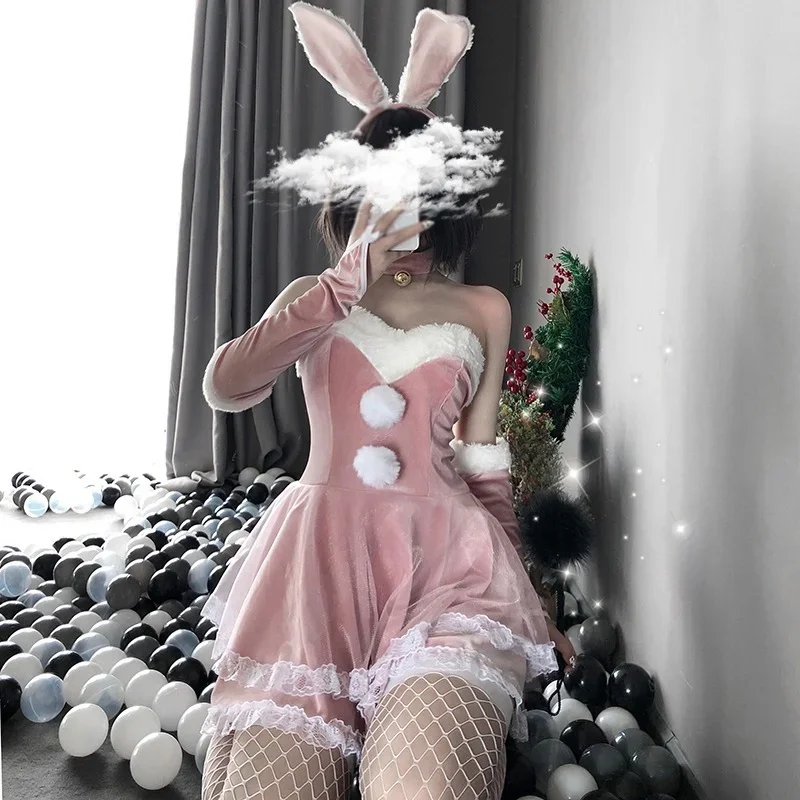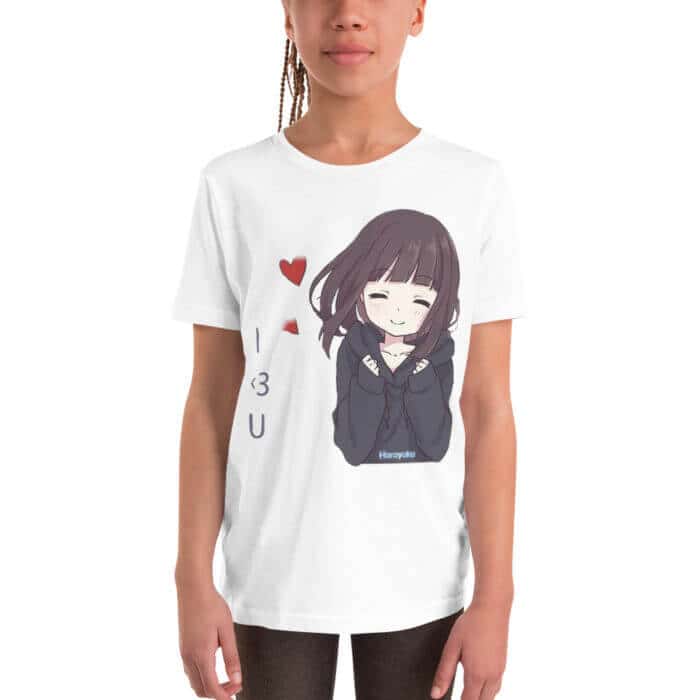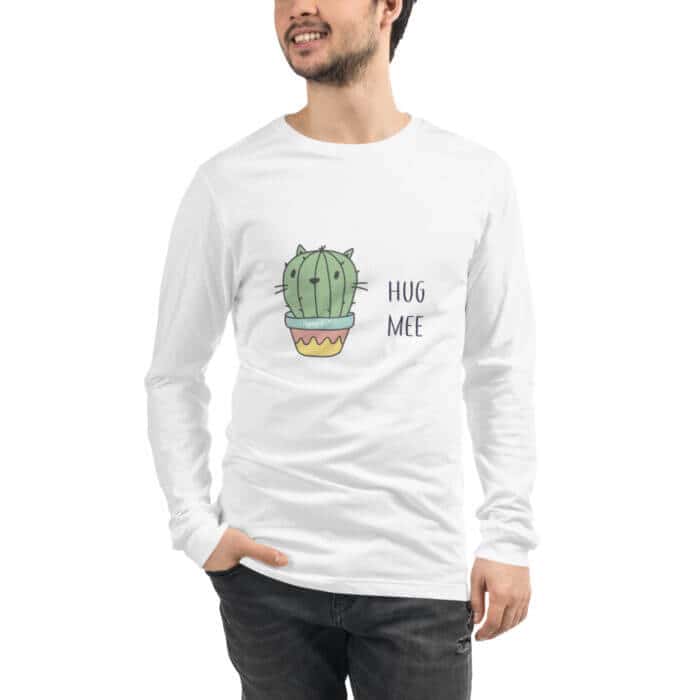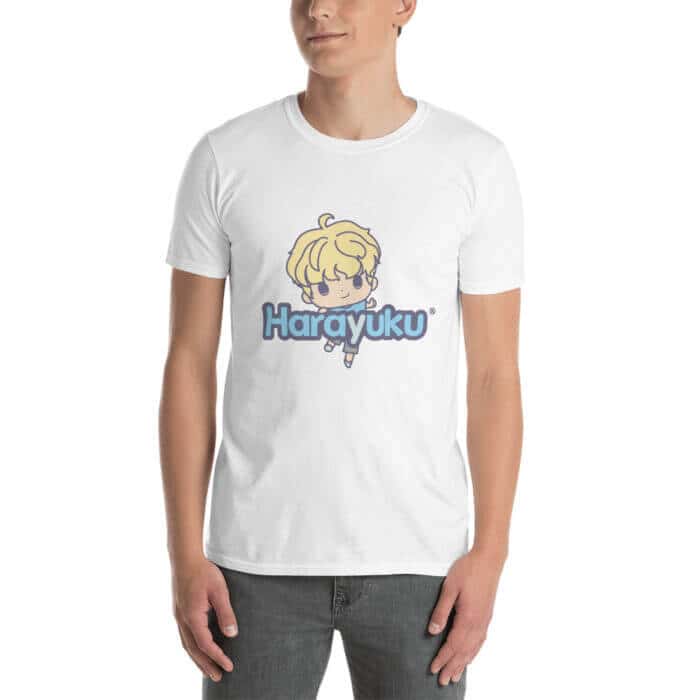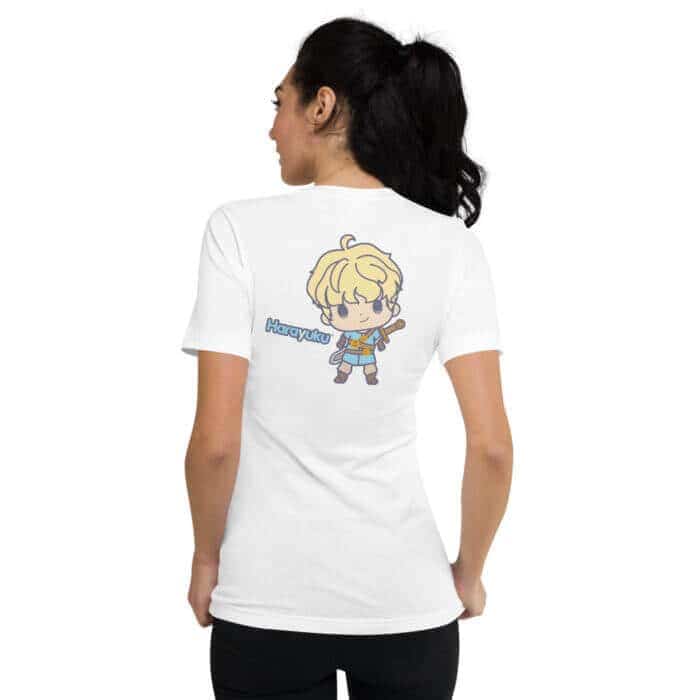If you are a fan of Japanese clothing, then you must be aware of Kimono, the most iconic Japanese dress. It is a traditional dress that the Japanese women have been wearing for centuries now. It has a long history and there are many myths surrounding its origins. The summer counterpart of this dress is also known as Yukata and there are some differences between the two that we will explore in this article.
Author
What Is a Kimono?
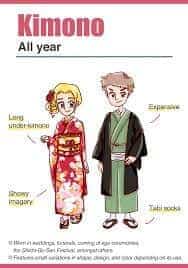
The word Kimono is based on two Japanese words: ‘ki’ and ‘mono’. Ki means to wear, and mono means thing. In that sense, Kimono basically refers to something you wear.
It is a well-established historical fact that Japanese people were inspired by Chinese for many centuries. Their culture and practices, to this day, are influenced by Chinese traditions and Kimono is also an example of it. To put it simply, this dress is the Japanese version of a Chinese dress known as Hanfu.
Meoow unisex T-shirt with long sleeves
€22,95 – €24,95Unisex Cosplay Hoodie
€32,95 – €34,25The Kimono has essentially four separate pieces of cloth that are sewn into a T-shape garment with very intricate folds. From above, it is secured by Obi, a traditional Japanese belt-like object worn above the garment.
Kimono gained popularity in Japan gradually and became a fashionable outfit for many Japanese women. People also came up with different varieties of the dress that we will discuss later.
Ideally, the dress is worn during winters when snow falls or temperature drops. This is because Kimono has thick layers of cotton and silk that are designed in a very fashionable manner. It is one of those warm dresses that people can wear easily without any discomfort or suffocation.
In recent times, many fashion designers in Japan also came up with polyester versions of this dress that are equally sexy, as well as warm and comfortable. This modern version of Kimono has also gained popularity amongst the Japanese women.
What Is a Yukata?
As mentioned earlier as well, Yukata is basically a variation of Yukata that is more suited to the hot days of summer. It is often referred to as a Yukata Kimono as well, but most fashion experts treat it as different from the Kimono. Unlike its traditional version, Yukata is made from lighter material and is worn during summers. It is a more casual kind of robe that many Japanese women can be seen wearing almost every other day.
The word Yukata translates to bathing cloth, and this is because the dress essentially looks more like a bathrobe or night gown that is worn in western side of the globe. To put it simply, Yukata is some kind of a variation of both a bathrobe and a Kimono. There are different variations that new Japanese designers often come with.
Meoow unisex T-shirt with long sleeves
€22,95 – €24,95Unisex Cosplay Hoodie
€32,95 – €34,25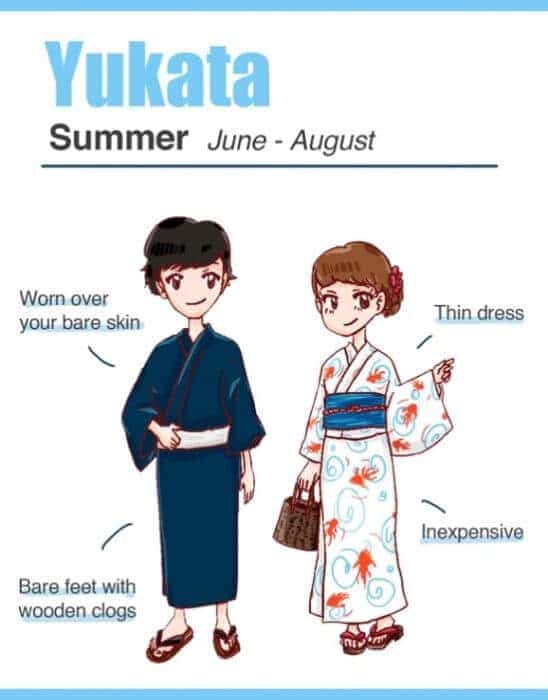
What’s the Difference Between a Yukata and a Kimono?

Having explained what both dresses look like and what their origins are, let’s now explore some of the key differences between the two. We will explore their differences in terms of materials, style, and uses.
Materials:
As mentioned earlier, Kimono is usually worn during cold days and hence is made from different layers of cotton, silk and often polyester as well. In contrast, Yukata, which is for summer days, is only made from lightweight cotton that is easier to wear. Cotton is preferred by Japanese because it soaks up any extra moisture and is the most comfortable fabric that is easily available in Japan. A very remarkable difference between the two dresses that is worth mentioning here is that a Kimono has an interior lining and many layers most of the time, but Yukata does not have any layers or linings and is based on a simplistic one piece of cloth. Moreover, Kimono also comes with nagajuban, an inner layer which helps keep the garment clean since it cannot be washed easily every day.
Style And Occasion
Kimonos are often a fashion signature that most Japanese women wear only on special occasions. However, they can be seen wearing Yukata even in regular everyday use. They can often be seen roaming around in markets wearing it, while you will find them wearing Kimono only during weddings, parties or some festivals. This is one reason why Kimono often contains expensive silk layers as well but Yukata does not. Kimono is mostly very delicate and cannot be washed every day, whereas Yukata is made from easy to wash and wear material that allows it to be perfect for daily use.
Classic unisex bread shirt with short sleeves
€11,95 – €16,95Classic hug Mee Unisex T-shirt with long sleeves
€22,95 – €24,95Some Modern Changes
Like everything else, these Japanese traditional dresses are also going through some changes with modern times. Fashion designers are coming up with new variations and making them more fashionable with every passing day. These dresses are no more limited to Japan and their different variations can be found in other parts of the world as well. Many women do not even know sometimes that their new dress is actually a variation of these Japanese traditional dresses. While historically, these dresses were worn by noble Japanese women, today we can even see some male variations of this dress.
New Variations of Kimono and Yukata
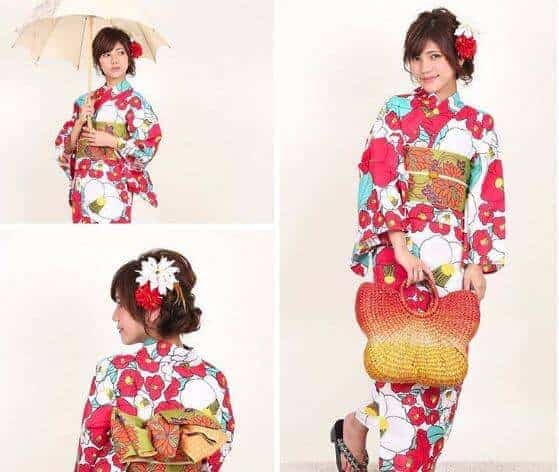
Nowadays, traditional Kimono and Yukata have evolved into something that may be considered entirely Japanese innovation, disconnected from their Chinese roots. New forms of these dresses can be seen decorated with beautiful Japanese art works as well embroidery that conveys unique meanings and depicts Japanese culture. What is interesting is that Japanese women have a different variation of these dresses depending on their marital status and age as well as the occasion they are dressing up for.
Different Types Of These Dresses
Furisode
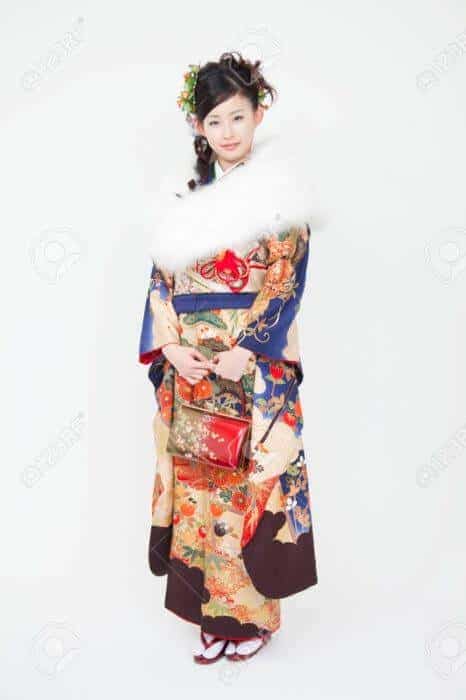
One of the most famous types of Kimono is Furisode. It is worn by single Japanese women and is considered a sign of their virginity. It has swinging sleeves that fall 39 to 42 inches, decorated with beautiful and colorful patterns. It is believed that the longer the sleeve of the garment, the more formal it is. Unmarried women can be seen wearing it on various occasions such as age ceremonies, parties and even some political events such as elections.
Unisex-Originals Shortsleeve T-Shirts
€11,00 – €16,00Huggy short sleeve t-shirt
€22,45 – €24,45Tomesode
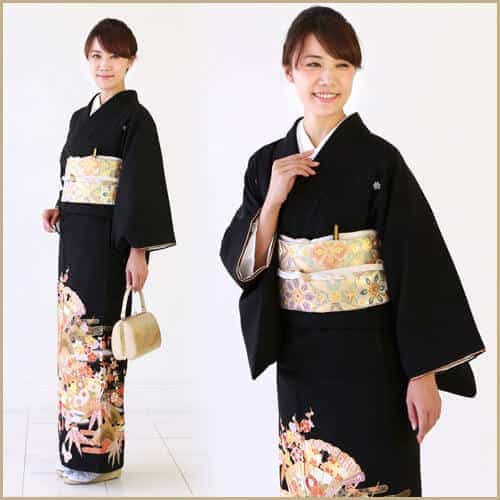
Another famous type is Tomesode. It is considered to be the most formal kind of Kimono. Usually, it is for married women, but in modern days, even the unmarried women are found wearing it. It often has artwork, crests, and colorful patterns. If you buy an expensive one, then the garment may also contain gold or silver linings. Within this Tomesode type, there are two categories- tomesode kuro and iro. The former is black and the latter is colored. Kuro comes with five crests and is an ideal dress for the most formal events. In contrast, Iro comes with colors and may have a different number of crests.
Odori
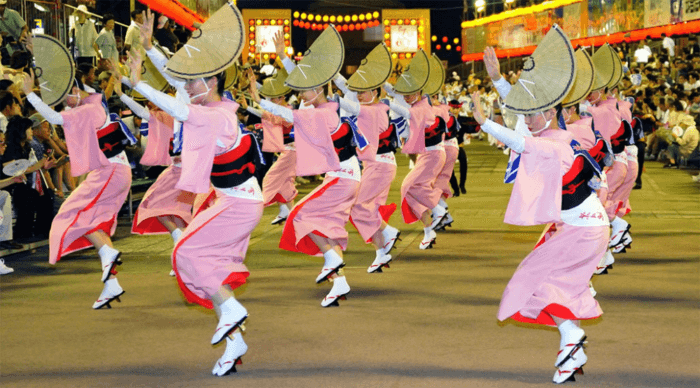
Next popular type is Odori, which actually means dance. It is an ideal dress for dancing events. Mostly, this type of Kimono is made from synthetic fabrics that are easy to wash and wear.
Houmongi
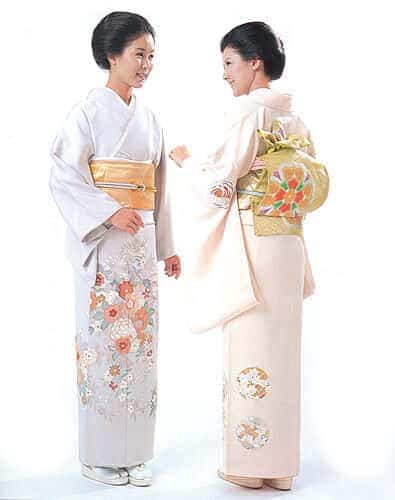
A houmongi, sometimes spelled homongi, usually is made with a pattern around the hem. It covers the whole body and is usually for formal gathering and meetings as well. It is considered a bit less formal than tomesode, but much more formal than many other types of Kimono.
Mofuku

Like all occasions, Japanese are also particular about funerals. Mofuku represents grief and is worn over funerals. There are male versions of this dress and is often made from plain back silk with five crests. Ideally, it is worn with white undergarments under it. Many women also use a black obi with it. Mofukus are always ideal for the funerals and other events that may have to do with grief.
How To Wear Them?
Putting on these traditional Japanese dresses can be tricky at times. While most types of Yukata can be worn easily, there are some important things to know before trying to wear a Kimono. Below, we will explore some of the things to do while wearing a Kimono and also look at tips to adjust the length of the dress.
Since these dresses are very long, it is essential to wear multiple form-fitting clothes under Kimono. During summers however, your Kimono may require only one layer of form-fitting clothes underneath. To prevent your skin from being revealed, you may also want to wear a white undergarment underneath. These are just some basic guidelines and depend entirely on your preferences and comfort. For winters, many women also prefer an extra layer of wrap that they call juban. It is a piece of cotton cloth.
Unisex-Originals Shortsleeve T-Shirts
€11,00 – €16,00Huggy short sleeve t-shirt
€22,45 – €24,45Once you are done with all the internal layering, it is time to get your hands in through the sleeves, while ensuring that dress’s opening is at the front. This can often be confusing but you will learn with time. You should make sure that you are wrapping the garment around your waist at this point because the length will have to be adjusted before that step.
To adjust the length, you will need to lift the garment so that it adjusts right above your ankles. Make sure it’s all comfortable and allows you to walk and move your hands freely. There is no point in wearing a dress that restricts your mobility or makes you uncomfortable, so make sure you adjust everything right. You must make sure that you have kept both sides even, otherwise, an uneven Kimono ends up looking unbalanced, which is not so good.
It is also important to wrap the fabric pieces over the hips. The left side of the garment should be on the top of the right side. Unless you are attending a funeral in Japan, Kimonos are always wrapped in this manner. While dressing up, keep your garment tightly in your hands until you are done adjusting the length.
Finally, when you are done with everything else, it is time to adjust the belt beneath the bunched up fabric. The belt needs to be wrapped around your waist from front to back. At the end, you will have to bring the loose ends to the front and adjust them properly.
What Should You Wear?
So far, we have discussed a lot about these traditional Japanese dresses. After reading about them in this much detail, you might be confused, making it difficult to make a choice. You might be stuck between Yukata and Kimono and other types as well. Making a choice can be a lot easier if you are aware of the weather and the occasion you are planning to dress up for.
If the weather is cold and you want to attend a formal gathering, such as a wedding, a funeral or even annual dinner at your workplace, then the Kimono is the best choice. As you have learned by now, it is ideal for formal occasions and there is one type for every particular event. For informal events, as well as regular working days, a Yukata is a much better and easier option.
Meoow unisex T-shirt with long sleeves
€22,95 – €24,95Unisex Cosplay Hoodie
€32,95 – €34,25If you are not Japanese but trying to adjust in Japan, or simply want to please a Japanese friend by wearing these dresses, then you must do your research before buying these expensive and fancy dresses. Always look up the right kind of colors to wear according to the occasion and weather. Do not feel hesitate to ask a Japanese fashion expert to guide you better.
Author
-

Modern fashion designers focusing on unique Japan inspired styles.

